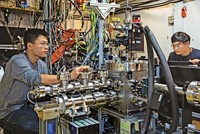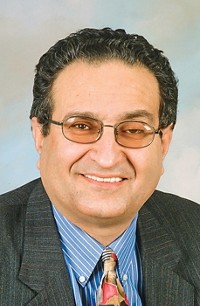Advertisement
Grab your lab coat. Let's get started
Welcome!
Welcome!
Create an account below to get 6 C&EN articles per month, receive newsletters and more - all free.
It seems this is your first time logging in online. Please enter the following information to continue.
As an ACS member you automatically get access to this site. All we need is few more details to create your reading experience.
Not you? Sign in with a different account.
Not you? Sign in with a different account.
ERROR 1
ERROR 1
ERROR 2
ERROR 2
ERROR 2
ERROR 2
ERROR 2
Password and Confirm password must match.
If you have an ACS member number, please enter it here so we can link this account to your membership. (optional)
ERROR 2
ACS values your privacy. By submitting your information, you are gaining access to C&EN and subscribing to our weekly newsletter. We use the information you provide to make your reading experience better, and we will never sell your data to third party members.
Analytical Chemistry
Molecular Dynamics In Real Time
by Mitch Jacoby
March 8, 2010
| A version of this story appeared in
Volume 88, Issue 10

Early in their education, chemistry students learn about reaction intermediates that exist for fleeting moments as molecules undergo transformations en route to forming reaction products. For molecules in motion, "fleeting" is on the femtosecond (10–15 second) timescale. Time resolution on that scale was achieved over the course of decades as the millisecond flash photolysis method of the 1950s gave way slowly to picosecond (10–12 second) lasers in the 1970s and lasers with femtosecond pulses in the 1980s.
To apply femtosecond technology to chemical systems, Ahmed H. Zewail's group at California Institute of Technology developed methods for exciting sample molecules with a "pump" laser beam and then quickly probing them with a second laser pulse. By tuning the interval between the pump and probe pulses, the group was able to record series of snapshots that captured reactants evolving into products. In a key demonstration of that technique, Zewail's group monitored the dissociation of iodine cyanide into an iodine atom and a cyano radical and caught the 50-femtosecond-long transition state in which the C–I bond is nearly broken (J. Chem. Phys. 1987, 87, 2395).
The Caltech team used similar methods to record the "birth" of •OH from the reaction of a hydrogen atom with CO2 and to show that tetrafluorodiiodoethane (CF2ICF2I) transforms into tetrafluoroethylene by way of consecutive C–I bond-breaking steps. In recognition of the importance of femtochemistry innovations to molecular reaction dynamics, Zewail was honored with the 1999 Nobel Prize in Chemistry.
As often happens in scientific discovery, the early femtosecond experiments on relatively simple systems—small gas-phase molecules—inspired researchers to apply ultrafast laser methods to study dynamics in a range of increasingly complex systems. Examples include liquid-phase molecules, metal-centered complexes, clusters, and a variety of biomolecules, including proteins and DNA.
Reflecting today on the advances in laser technology that helped bring about this burgeoning research field, Zewail says, "We could not have dreamed 50 years ago that one day we would be able to reach the ultrashort time domain required to study the motions of atoms and molecules in real time."





Join the conversation
Contact the reporter
Submit a Letter to the Editor for publication
Engage with us on Twitter